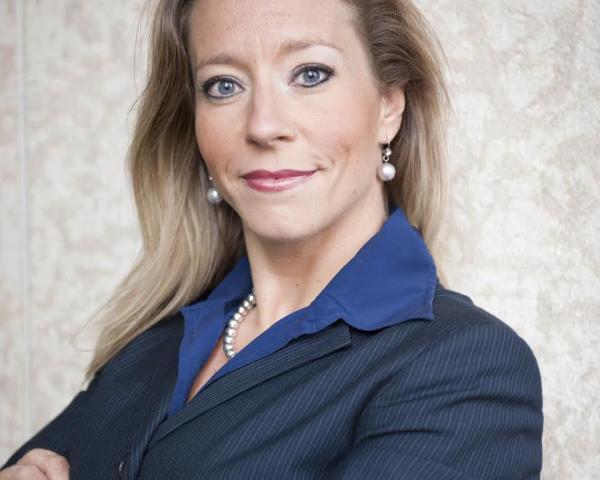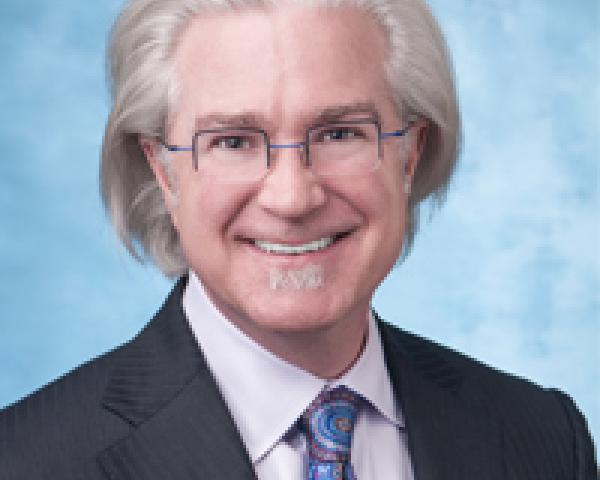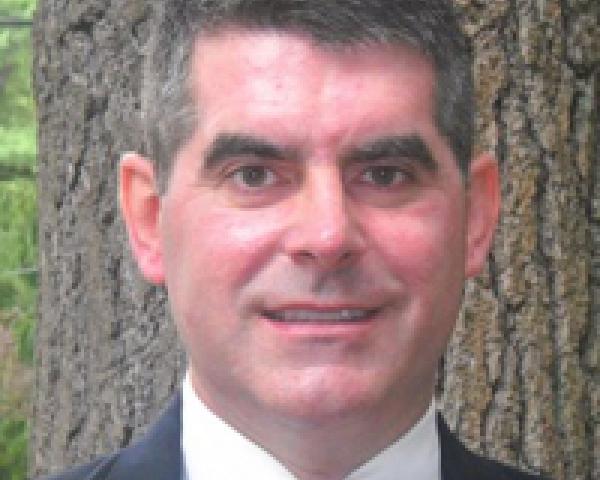Snoopy the Destroyer? Nope, Nothing to Fear
In the wake of the Met Life court decision, some claim that federal regulators must tie up "Snoopy." But they miss a key point about the states.

In the wake of the Met Life court decision, some claim that federal regulators must tie up "Snoopy." But they miss a key point about the states.

Get Involved
Our authors are what set Insurance Thought Leadership apart.
|
Partner with us
We’d love to talk to you about how we can improve your marketing ROI.
|

Nick Gerhart served as insurance commissioner of the state of Iowa from Feb. 1, 2013 to January, 2017. Gerhart served on the National Association of Insurance Commissioners (NAIC) executive committee, life and annuity committee, financial condition committee and international committee. In addition, Gerhart was a board member of the National Insurance Producer Registry (NIPR).
Companies that reach consumers when they are making decisions and forming preferences will be ahead of the curve. Clean data is key.

Get Involved
Our authors are what set Insurance Thought Leadership apart.
|
Partner with us
We’d love to talk to you about how we can improve your marketing ROI.
|

Tara Kelly is founder, president and CEO of Splice Software. She has a passion for enabling clients to engage in a meaningful, data-driven dialog with their customers.
With the benefits of telematics proven in cars, insurers are now turning their focus to the residential realm. Pet telematics, anyone?

 Enter the era of the smart home
With the benefits of telematics so clearly proven within the automotive industry, insurers are now turning their focus to the residential realm – in a bid to create "smart homes" that are intuitive and responsive to internal and external risks.
For many homeowners, the ability to control their climate, lighting and entertainment devices is one of the main attractions when it comes to home telematics, whereas insurers are drawn to the security benefits offered.
Luckily, telematics-based home insurance offers both parties the best of both worlds – convenience and risk mitigation, all in one handy tech-savvy package.
Smart home = smarter home insurance?
Just as black boxes in cars reward safe driving behaviors with lower premiums and discounts, smart home owners could reap the benefits of a connected abode. From discounts for locking the door and setting the alarm, to a fairer, up-to-date assessment based on moisture, flooding or carbon monoxide monitoring, home telematics can give consumers more control over their insurance rates and premiums, as well as a more in-depth understanding of their utilities usage, environmental risks and overall home security.
Enter the era of the smart home
With the benefits of telematics so clearly proven within the automotive industry, insurers are now turning their focus to the residential realm – in a bid to create "smart homes" that are intuitive and responsive to internal and external risks.
For many homeowners, the ability to control their climate, lighting and entertainment devices is one of the main attractions when it comes to home telematics, whereas insurers are drawn to the security benefits offered.
Luckily, telematics-based home insurance offers both parties the best of both worlds – convenience and risk mitigation, all in one handy tech-savvy package.
Smart home = smarter home insurance?
Just as black boxes in cars reward safe driving behaviors with lower premiums and discounts, smart home owners could reap the benefits of a connected abode. From discounts for locking the door and setting the alarm, to a fairer, up-to-date assessment based on moisture, flooding or carbon monoxide monitoring, home telematics can give consumers more control over their insurance rates and premiums, as well as a more in-depth understanding of their utilities usage, environmental risks and overall home security.
 In fact, smart home technology-based insurance has the potential to improve on existing discounts or lower premiums for features like security systems – simply by ensuring that these features are regularly used.
With people buying smart switches and systems, insurers are looking initially for propositions that help reduce the impact, even eliminate, some claims around water, theft and fire.
What’s next, connected pets?
It may seem like a sci-fi fantasy, but telematics for pets is set to be the next game-changer in the insurance industry, which is no surprise given that around 2.6 million people in the U.K. have pet insurance.
Pets are seen as part of the family, and owners spend a considerable amount on maintaining their furry best friends’ health, well-being and fitness. But how do we keep an extra close eye on our four-legged friends when we don’t speak their language?
Pet telematics: Going beyond the microchipping process
It’s not as disturbing or invasive as it sounds. All it takes for pets to join the telematics generation is a small GPS device – which is clipped to a collar or inserted under the dog’s skin to record its movements and activities throughout the day.
When paired with a smartphone app, this safe, easy technique allows owners and insurers to monitor pets’ body temperatures, hormones and heart rates, with some even going as far as tracking bowel movements – and this data is collated to form a comprehensive picture of a pet’s health and lifestyle.
In fact, smart home technology-based insurance has the potential to improve on existing discounts or lower premiums for features like security systems – simply by ensuring that these features are regularly used.
With people buying smart switches and systems, insurers are looking initially for propositions that help reduce the impact, even eliminate, some claims around water, theft and fire.
What’s next, connected pets?
It may seem like a sci-fi fantasy, but telematics for pets is set to be the next game-changer in the insurance industry, which is no surprise given that around 2.6 million people in the U.K. have pet insurance.
Pets are seen as part of the family, and owners spend a considerable amount on maintaining their furry best friends’ health, well-being and fitness. But how do we keep an extra close eye on our four-legged friends when we don’t speak their language?
Pet telematics: Going beyond the microchipping process
It’s not as disturbing or invasive as it sounds. All it takes for pets to join the telematics generation is a small GPS device – which is clipped to a collar or inserted under the dog’s skin to record its movements and activities throughout the day.
When paired with a smartphone app, this safe, easy technique allows owners and insurers to monitor pets’ body temperatures, hormones and heart rates, with some even going as far as tracking bowel movements – and this data is collated to form a comprehensive picture of a pet’s health and lifestyle.
 Pet insurance is really a well-being product – private medical insurance for cats and dogs, effectively. Pet obesity results in a lot of claims, so if pet telematics can encourage owners to have healthier, more active pets, he’s for it.
What’s in it for consumers?
The use of telematics in everyday life and activities puts consumers in the driver’s seat when it comes to their insurance policies and premiums. By having access to detailed data on their driving, home security and pet care, ordinary consumers can become more aware of the risks around them, which could spur them to change or improve their behavior.
People want to be healthy and happy, and not have to deal with the aftermath of an insurance event. The common thread across telematics is that technology creates proposition that either prevent or minimize the impact of claim events.
What about privacy concerns?
While many customers may balk at the thought of having their lives monitored, a recent Deloitte survey has shown that more than half of respondents were willing to share private information for a premium discount. This shows that, although privacy concerns remain top of mind for most, a sizable incentive can override that resistance to transform consumers into adopters. See the Deloitte report here.
What’s in it for insurers?
Telematics enables insurers to create products and services that accurately reflect customers’ risk.
Perhaps that explains why telematics has become increasingly popular among consumers and insurers over the past few years. A study by ABI research estimates that global insurance telematics subscriptions could exceed 107 million in 2018, up from 5.5 million at the end of 2013. It also predicts that usage-based insurance will represent more than 100 million telematics policies and generate in excess of €50 billion in premiums globally by 2020.
Pet insurance is really a well-being product – private medical insurance for cats and dogs, effectively. Pet obesity results in a lot of claims, so if pet telematics can encourage owners to have healthier, more active pets, he’s for it.
What’s in it for consumers?
The use of telematics in everyday life and activities puts consumers in the driver’s seat when it comes to their insurance policies and premiums. By having access to detailed data on their driving, home security and pet care, ordinary consumers can become more aware of the risks around them, which could spur them to change or improve their behavior.
People want to be healthy and happy, and not have to deal with the aftermath of an insurance event. The common thread across telematics is that technology creates proposition that either prevent or minimize the impact of claim events.
What about privacy concerns?
While many customers may balk at the thought of having their lives monitored, a recent Deloitte survey has shown that more than half of respondents were willing to share private information for a premium discount. This shows that, although privacy concerns remain top of mind for most, a sizable incentive can override that resistance to transform consumers into adopters. See the Deloitte report here.
What’s in it for insurers?
Telematics enables insurers to create products and services that accurately reflect customers’ risk.
Perhaps that explains why telematics has become increasingly popular among consumers and insurers over the past few years. A study by ABI research estimates that global insurance telematics subscriptions could exceed 107 million in 2018, up from 5.5 million at the end of 2013. It also predicts that usage-based insurance will represent more than 100 million telematics policies and generate in excess of €50 billion in premiums globally by 2020.
 Telematics can move insurers from dealing with incidents, to stopping those incidents from being as bad as they could otherwise be. Using technology lets insurers move into that prevention mitigation space.
This article originally appeared on www.rsagroup.com/the-thread.
Telematics can move insurers from dealing with incidents, to stopping those incidents from being as bad as they could otherwise be. Using technology lets insurers move into that prevention mitigation space.
This article originally appeared on www.rsagroup.com/the-thread.
Get Involved
Our authors are what set Insurance Thought Leadership apart.
|
Partner with us
We’d love to talk to you about how we can improve your marketing ROI.
|

Kenny Leitch is global telematics director for RSA, responsible for delivering the telematics strategy across all of RSA's portfolios and regions in the U.K., Ireland, Canada and Scandinavia. In the U.K., he’s also responsible for bringing new propositions to market that equip customers with the data and information they need to reduce their insurance risk (e.g. connected home).
More than half of companies do not plan to buy cyber insurance despite the increased threat of attack. This disconnect exists primarily at the board level.


Get Involved
Our authors are what set Insurance Thought Leadership apart.
|
Partner with us
We’d love to talk to you about how we can improve your marketing ROI.
|

John G. Bruno serves as Aon’s chief operating officer as well as chief executive officer of Aon’s data and analytic services solution line, which includes the firm’s technology-enabled affinity and human capital solutions businesses.
Digitally driven change is becoming as critical an issue to most companies as finance, but boards aren't prepared.

Get Involved
Our authors are what set Insurance Thought Leadership apart.
|
Partner with us
We’d love to talk to you about how we can improve your marketing ROI.
|

Chunka Mui is the co-author of the best-selling Unleashing the Killer App: Digital Strategies for Market Dominance, which in 2005 the Wall Street Journal named one of the five best books on business and the Internet. He also cowrote Billion Dollar Lessons: What You Can Learn from the Most Inexcusable Business Failures of the Last 25 Years and A Brief History of a Perfect Future: Inventing the World We Can Proudly Leave Our Kids by 2050.

Toby Redshaw is a global business transformation leader who has driven P&L and business process/ performance improvements across multiple industries. He is known for helping firms deliver competitive advantage through innovative, real-world IT centric strategy and speed-of-execution in high growth, high service, and high technology environments.
Tragedy can beget additional tragedies. How leaders respond after death by suicide is critical to stopping that negative momentum.

Get Involved
Our authors are what set Insurance Thought Leadership apart.
|
Partner with us
We’d love to talk to you about how we can improve your marketing ROI.
|

Bob VandePol serves as executive director of Pine Rest Christian Mental Health Services' Employee Assistance and Church Assistance Programs. He leverages behavioral health expertise and resources to support the organizational, human resource and membership objectives of businesses and churches.
Unless changes are made, securities litigation will pose greater and greater risk to directors and officers, despite D&O policies.

Get Involved
Our authors are what set Insurance Thought Leadership apart.
|
Partner with us
We’d love to talk to you about how we can improve your marketing ROI.
|

Douglas Greene is chair of the Securities Litigation Group at Lane Powell. He has focused his practice exclusively on the defense of securities class actions, corporate governance litigation, and SEC investigations and enforcement actions since 1997. From his home base in Seattle, he defends public companies and individual directors and officers in such matters around the United States.
Having attacked certain areas, including auto, start-ups are now aggressively going after sales to small businesses.

Get Involved
Our authors are what set Insurance Thought Leadership apart.
|
Partner with us
We’d love to talk to you about how we can improve your marketing ROI.
|

Dax Craig is the co-founder, president and CEO of Valen Analytics. Based in Denver, Valen is a provider of proprietary data, analytics and predictive modeling to help all insurance carriers manage and drive underwriting profitability.
The DOL fiduciary ruling will initially disrupt annuity sales related to IRA rollovers but will then hit the whole portfolio for life insurers.

Get Involved
Our authors are what set Insurance Thought Leadership apart.
|
Partner with us
We’d love to talk to you about how we can improve your marketing ROI.
|

Todd Eyler is a vice president/client partner at Majesco, working closely with life and annuity company clients to ensure the successful delivery of projects and the appropriate use of Majesco products and services.
Can alternative dispute resolution systems help, ranging from mediation to specialized health courts?

Get Involved
Our authors are what set Insurance Thought Leadership apart.
|
Partner with us
We’d love to talk to you about how we can improve your marketing ROI.
|

Erik Leander is the CIO and CTO at Cunningham Group, with nearly 10 years of experience in the medical liability insurance industry. Since joining Cunningham Group, he has spearheaded new marketing and branding initiatives and been responsible for large-scale projects that have improved customer service and facilitated company growth.

Richard E. Anderson is chairman and chief executive officer of The Doctors Company, the nation’s largest physician-owned medical malpractice insurer. Anderson was a clinical professor of medicine at the University of California, San Diego, and is past chairman of the Department of Medicine at Scripps Memorial Hospital, where he served as senior oncologist for 18 years.